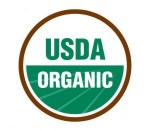Laundry detergent made from flowers! Cars that don’t pollute! Potato chips fried in organic oils! These days, everything seems to be marketed with an eco-spin — even products that are notoriously bad for people and the planet. So are companies truly seeing the green light, or are they just greenwashing?

Photo: iStockphoto
If green is the new black, then greenwashing — the practice of putting an eco-friendly spin on a not-so-eco-friendly product or company — is the new gray area.
Do you have to devote all your time to investigating every company’s corporate record to figure out who’s really making change and who’s just talking a good game? Fortunately, no. Here are a few red flags to watch for, and a few tips for shopping smarter — put them together, and you can feel more confident about choosing products that really make a difference.
Buyer Beware: Greenwashing’s Red Flags

The official U.S. organic label.
Vague claims. Words like “natural,” “green,” “eco,” “nontoxic,” and even “biodegradable” don’t mean much on their own. They’re easy to slap on a product, and they’re not currently regulated. Look for more concrete terms like “organic” and “recycled,” which are overseen more closely by the federal government and can be verified with a symbol on the package. (And note that “recyclable” just means you might be able to recycle the product in your community, while “recycled” actually means the company has already incorporated some amount of recycled materials in the product.)
Pretty packaging. More and more products, especially cosmetics and household cleaners, are adopting a “natural” look, eschewing the bright colors of old and replacing them with a cleaner, softer design. Is your laundry detergent really made from flowers, or has it simply added 1 percent flower oil to its chemicalicious mix? Read the ingredients to find out.
Nontransparency. If a company doesn’t have the space on its product to explain its green claims, it should make the information available on its website or through its customer service department. Look for a phone number or web address on the package — if you can’t find it, or if it’s hard to track down more details once you contact the company, there’s something fishy going on.
Big promises. If it sounds too good to be true, it probably is. Can you really make up for a year’s worth of driving by paying a carbon-offset surcharge when you buy a car? Can a biodegradable diaper really biodegrade if it’s smooshed into a deep, dark landfill? (Doubtful, and no.) Companies want to ease your mind with such promises — but try not to make purchases based on emotions. Instead, learn as much as you can about the realities behind the claims.

The Energy Star logo.
Buyer Be Smart: How to Choose Eco-Wisely
Look for certification. There are a few trustworthy certifications out there that, while not perfect, are reliable. Use them as your guide. Look for the federal government’s Energy Star designation on appliances and electronics; the USDA organic seal on food and cosmetics; Green Seal (and, in Canada, EcoLogo) on household cleaning products; and the Forest Stewardship Council logo on wood and paper products. (Beware of the Sustainable Forestry Initiative label, which was concocted by the timber lobby.)
Think about how you buy, not just what you buy. Green products can be great, but the choices you make when you buy any product can be just as important when it comes to lessening your impact. Some tips: buy in bulk to reduce individual packaging; when you buy a product or package that’s recyclable, make sure it’s actually recyclable in your area (and make sure to actually recycle it!); buy durables instead of disposables (things like rechargeable batteries and reusable mugs); and always think carefully about whether you really need the item in the first place.
Trust your gut. If a company is making green claims that seem counterintuitive, approach with caution. Car companies and oil companies are great examples of industries that are eager to convince the world they’re “green,” through ads with happy children or logos with puffy clouds — but meanwhile, they keep manufacturing low-mileage vehicles and plunging ahead with damaging resource extraction. These are polluting industries, and it will take more than token gestures to clean up their act. While their green leanings should be encouraged, consumers shouldn’t lose sight of the big picture.
Do your research. Sometimes you’ve got to make a decision while standing in the grocery aisle, but if you have time in advance or if you’re considering a bigger purchase — like a car, washing machine, or TV — it pays to do some digging before going to the store. Sites like Consumer Reports’ GreenerChoices.org, Greenercars.org, and the Electronic Product Environmental Assessment Tool (EPEAT) can help you make sense of manufacturers’ claims on big-ticket items; the Environmental Working Group and Responsible Purchasing Network have helpful information on smaller items like cosmetics, cleaners, and food.

Check out more green-living hints on easy ways to cut energy use and recycle unusual items.
And get oodles more green living tips from Grist’s book, Wake Up and Smell the Planet: The Nonpompous, Nonpreachy Grist Guide to Greening Your Day.
*This article originally mentioned a Today show appearance scheduled to happen on Tuesday, Jan. 29, but, alas, that appearance was canceled.
**But then it was rescheduled! You can watch it here.



